Kota Kinabalu
We started off this 4th quarter in the capital of
Sutera Harbor in Kota Kinabalu.
Jaap flew out on the 5th and Marijke stayed
with the furries and kept busy exploring the town and getting Q3 on the web. The
marina of Sutera harbour is very comfortable. Much better than others, probably
even the best marina in
The BIYC rally brought some old
friends and acquaintances: s/y Labarque with Patrick and Elizabeth whom we met
on various occasions (e.g. Chinese New Year 2008!) since Sebana Cove 2 years
ago. s/y Ambor Nectar, with Karin who came to Macau with us from
When Jaap came back from
Then we “did the mountain”. Mt Kinabalu is the highest
in
Mt Kinabalu has 9 peaks, the highest is 4095m
Marijke came along as far as the Timpohon gate with the Nikons (binoculars and cameras) where a lot of new wings were seen. We found Dennis, the birding guide who drove us there, after many mails to Malaysia Nature Society and associated members. He picked us up at 5:30 am and we had a wonderful day there.
A curious treeshrew at the gate.
At the end of a very productive afternoon Dennis and
Marijke returned to KK and Jaap checked into a mountain hut, from where he
started his ascend the following day. Dennis became a good friend and took
Marijke to other birding locations in Sugud and the
Signs and rope pointing the way up.
Early morning view towards
Very steep sometimes, and not very warm. One of many interesting pitcher plants.
Everything for the Laban Rata hut (3810m) needs to be carried by porters. They get paid by the weight. The big one on the left (a fridge?) was 73 kg!
We hired a bike and drove over the
Air coming out of the tap?
When the month was up we left the city and motor-sailed
up north towards Kudat. The SW monsoon was on its end and NE winds had started.
They weren’t very strong yet and as long as we hugged the coast we made good
process in that direction. We anchored somewhere halfway for the night and
rounded the north tip of
Here we met up with friends Kari and Aslaug on s/y
Lady Ann
(http://simnet.is/aoa/
) who were hauled out at a yard just out of town and had been there for quite
some time. First for a scheduled bottom job, later again for major prop shaft
problems due to a faulty shaft bearing. Poor guys, there are many nice places
in
The very northern tip of
The weather was changing. A lot of short, heavy rain
showers made us hurry on. We had plans before the wet monsoon settled in. Our
next trip was 2 days to
Sandakan Yacht Club, walking distance to town, has a swimmingpool, showers, bar and restaurant, but no berthing, so we anchored right in front.
Harbor scene near the fish market.
In Sandakan we had some much needed laundry and essential shopping on our list, but we also took the time to visit Sepilok, a pocket of nature where the rainforest is nearly (never completely) untouched. Most tourist head straight for the Orang Utang sanctuary, but we were more interested in RDC (Rainforest Discovery Centre) with its good hiking trails, observary towers and canopy walk. The Nikons worked overtime and the bird section got bigger.
The canopy walk at RDC and the view from there.
5 days later, November 18th, we left
With a length of 560 km it is Sabah’s longest river,
starting somewhere around Mt Kinabalu and winding its way northwest to the
There are some guesthouses and B&B type accommodation, mostly simple and basic, and 1 or 2 “proper” resorts that offer air-conditioning and hot showers 24/7. This is all relative, because when the river floods in the wet season, they too get wet feet and “things can be quite uncomfortable to say the least” (quoted from Lonely Planet).
Alishan entered the river from the SE, at
We spent the first night close to the entrance, in front of some houses on the south bank and watched macaques and a wild pig with a huge nose roam on the mudflat at low tide. And this was the start of a wonderful trip. Not sailing wise, we had to use the engine the whole way. There was hardly any wind to sail by and the current is sometimes quite strong. That, plus the many bends makes the river just un-sailable. There were also some difficult parts where the shallow spots and little islands seemed to prevent us from crossing to the other side when we needed. We explored the tracks by dinghy before taking Alishan, whose depth is a little over 2 meter. Thanks to a load of information from other yachts we managed all right. M/v Lifeline and s/y Kantala had left their navigational details on a CD at Sandakan Yacht club and this was topped up with C-map tracks of s/y Lady Ann and s/y Helena Zwo.
Abai is a village near the northern entrance, with
around 30 families.
There are no roads and no cars. All transport is by boat.
So we motored, sometimes 3, sometimes 10 miles a day and watched the shores and the skies. The first day was the day of Kingfishers. The big and colorful Stork-billed were nearly as plenty as the Colored. The next day we dropped anchor at a monkey corner and we happily watched the macaques till night fall. And again the following morning, not so happy anymore after those monkeys had kept us awake all night. Next came the day of Hornbills. Black, Wrinkled and Rhinoceros flew over. Then we had the day of the Proboscis monkeys, which of all the primates are my favorite. In between we saw storks, darters and many raptors and heard the sounds of lots more.
The big nose of the male and their pink complexion gave them their Malay name: Orang Belanda – Dutchman.
Suddenly Jaap spotted a trunk, followed by the bodies of 3 elephants standing in a small clearing on the river bank. They slowly withdrew in the jungle when they noticed us. We thought they might have had plans for a swim and dropped the hook to wait. We heard them move through the bush downstream, but didn’t see them anymore. Suddenly, at 3:00 am there was a lot of trumpeting and splashing just in front of ALISHAN. 2 Elephants were swimming. They had decided to cross the river and made no secret about it. It was too dark to see anything clearly, but we heard one go climbing ashore again while the other pottered on a few hundred meter till he managed to get out. The banks are quite steep sometimes and although these are pigmy elephants, they are really quite big and weigh hundreds of kilos.
That was very exciting and the highlight of our way up. Others were the oxbow lake Danau Pitas near Abai and a small tributary ¾ on the way. We launched the dinghy and motored our way in, feeling bad about the noise of the Yamaha, wishing we had canoes. Then, if there was a current we could drift back and that was absolutely wonderful.
The lake is half filled with flowering water hyacinths and other water plants in many shades of green and purple. They formed floating islands, slowly making their way out to the main river. White egrets, from Great to Little, speckled the shoreline, waiting for their fish and flying up in formation. Sometimes they landed in the middle of the water on bits of wood, drifting by the boat, taking off at the very last moment. There were Herons, many Purple, Darters, Storks and several different raptors. The tall reeds moved gently in the breeze. They were packed with grassbirds, munias, prinias, swallows and swiftlets. Every now and then the lot took off with a lot of twittering and the plumes would sway another way, marking the passage of “something big”. In the dark green foliage of big trees we saw monkeys swinging, while Hornbills tree hopped their way to the next fruiting fig.
Oriental Pied Hornbills
Apart from the Proboscis Monkeys we saw Silver Leave
Monkeys, with cute faces and long grey hair, ever so shy. Pigtail Macaques, big,
with red fur and funny hairdo’s. We noticed not only their tails are borrowed,
they also have pigs ears. And many ordinary monkeys, the Longtail Macaques,
living in big groups with many babies, always socially active and very
entertaining.
Blue-eared and Stork-billed Kingfishers next to a Black-and-Yellow Broadbill.
Flocks of Long-tailed Parakeets made noisy landings up in the trees and Blue-eared and common Kingfishers sat quietly amongst the low branches. There were Shamas, Malkohas, Broadbills, Woodpeckers. And the sounds of Bornean Ground Cuckoos. No, no sightings. We sometimes saw some movement in the bushes on the riverbank, indicating the presence of something bigger than the average babbler or squirrel. Talking about squirrels – never knew there were so many different kinds and the noise they make!!
A blurry brown mass in a green tree: Orang Utang. They are shy and hard to spot!
This Pigtail Macacque doesn’t mind us watching him.
There are a number of cat-like mammals living in this
part of
Wakame in hiding.
A week later, after negotiating 500 curves, 400 logs and a ton of other stuff, we arrived in Sukau, a small Muslim settlement 50 miles up river with a road and a mosque and a school. Here some power lines hanging over the river prevented us from continuing upstream. Our mast is about 18m high. We might be just OK, but if not, we’d get in serious trouble. Didn’t want to take the risk.
Here we anchored, just in front of those cables and
were able to buy a few things like 100+ (an isotonic drink) and mosquito coils,
2 essentials. The shops had no fresh fruit nor vegetables, they were sold only
on the weekly market, every Thursday. But there was an internet café! Hey, this
is the
The boat landing and the Thursday market at Sukau
Zainal, a local, who had befriended other visiting yachts came to visit and told us about the area, where to go, what to see. He told us about a Japanese man studying the proboscis monkeys and the next day we looked him up. Ikki Matsuda started his studies 5 years ago and now held a PhD on these monkeys. He could tell us all about them and even took us on one of his trips up the Menanggul river. It was great. Thank you Ikki, for your introduction to what we call the PB monkeys. (Prison Break tv-series we were watching at night were also shortened to PB) Many times we returned to this tributary of the Kinabatangan, the Menanggul river and these peaceful creatures never ceased to amaze us with their entertaining ways and their ENORMOUS jumps. We love them too!
Ikki Matsuda on his way to work.
On these river trips we sometimes used our dinghy, but
often hired a local boat. Ahmad Arsih, who had helped Ikki with his studies,
now worked free lance as boat driver / nature guide and Ahmed had something:
The best eyes of
019-8732925, email: sukau82@yahoo.com
With Ahmed in his boat: comfortable, fast, easy to maneuver and quiet. Much better than our dinghy.
1 Month old baby croc, already fearsome with its razor sharp teeth.
A buffy Fish Owl and a Mangrove Cat snake.
We didn’t see any other yachts for the first 2 weeks, until s/y PEWTER showed up, followed by s/y TONIC and s/y BARNACLE C. The Pewters were in Sukau only for 3 days, but the others stayed for Christmas. We had a X-mas potluck featuring a lot of local fresh-water prawns We all got in Ahmed’s boat and sighted the elusive gibbons!
Christmas onboard s/y BARNACLE C with John, Jane, Doug and Margret.
A local with his catch of the moment (Look well!) and a fish trap below.
The big rains of the season still hadn’t come, but every week it would rain for a day or so and we could catch enough water for our tanks. Not enough for washing cloths, so like every housewife in Sukau, we used the river.
These rainy periods brought more big logs down the river. It had given us some problems on the way up, until we figured out where to anchor and where not.
You know how the grass is always greener round the
corner, so is the river further upstream. So when Mr Zainal offered to take us
on a work-trip to Danau Girang we were delighted. The
Zainal and Budin checking out the damage at the
At the end of the year s/y ALISHAN was still at Sukau,
but getting ready to move down river. Marijke had made a day trip into
We wanted to spend at least a month here, knowing that regarding the time of the year it could become very uncomfortable, but by know had enjoyed it tremendously. 6 Weeks and still more to come. But that’s for the next update.
See you then.
Sabah wildlife, KK to Sandakan
A Common Iora looking out for his mates. They came in flocks to the Sutera Harbor area and were a colorful touch in the green trees around the golfclub.
Great Egret
Fishing is best on the incoming tide
The mudflats and wetlands were popular with the Great,
Little and Reef Egrets.
Their numbers increasing daily as the migrants flew in. (Oct ’09)
Retiring to the Casuarina trees by the end of the day
Striated Grassbirds are immigrants to Borneo from the Phillipines
Just a pretty hopper
Purple Heron, a daily sight in a swamp near the yacht harbor.
The Grey Heron sometimes flew in.
Always around
A nest full of stingers, suspended in a tree
Greater Coucal in the swamp
A Dark-sided Flycatcher joining me on a morning bike ride.
Rufous Night Heron at KK’s Wetland Sanctuary
Pied Fantail
A family of Wistling Ducks in the paddyfields outside KK city
L: White-breasted Woodswallows R: Blue-naped Parrot
Residents of Tanjung Aru
This Java Sparrow, all by himself, is a winter visitor
Jerdon’s Baza, seen at Sugud, when Dennis took me
there.
It was chased off by a group of small birds.
A butterfly of high mountains named Three Rings
Birds at the Crocker Range
Mountain Leaf-warbler
A female Ashy Drongo
The rare Fruithunter!
We were lucky to see a pair at a fruiting tree at the very top of the range.
Velvet-fronted Nuthatch, Sunda Bush-warbler, Temminck’s Sunbird
Banded Owl
A Crocker Range Caterpillar
Other forms of wildlife, found at higher elevation (1200m)
Mt Kinabalu
White-browed Shrike-babbler
Pale-faced Bulbul
Chestnut-hooded Laughing-thrush
Mountain Leaf-warbler, the green variety
This Horned Frog was blocking the way for a White-browed Shortwing, who was not willing to leave the safety of the undergrowth. We only got a glimps of him, before we discovered this monsterous looking toad.
Bornean Whistler
Chestnut-crested Yuhina
White-throated Fantail next to a very green snail
Yellow-breasted Warbler
Sunda Laughing-thrush
Ochraceous Bulbul
Flycatchers:
Eyebrowed Jungle Flycatcher
Little Pied Flycatcher
Snowy-browed Flycatcher (fem)
2 Indigo Flycatchers
Golden-naped Barbet
L: 2 Rhinoceros beetles drinking sap from a tree R: a female Bornean Whistling Thrush
Bornean Forktail
Bornean Flowerpecker
RDC, Sepilok
Raffle’s Malkoha
An early morning walk at the Rainforest Discovery
Center starts with these birds
They are everywhere and act like they own the place.
Red-eyed Bulbul on the flower of Elephant’s Ear
A party of Buff-necked Woodpeckers ignored me completely.
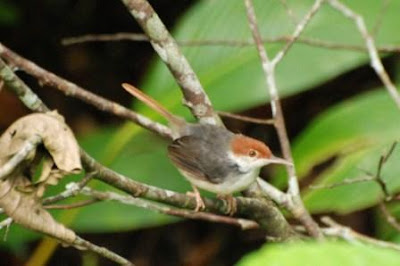 |
L: Rufous-tailed Tailorbird R: Eastern Crimson Sunbird
White-crowned Shama
The Little Spiderhunter feeding on wild banana flowers
Among other things we saw at RDC are this bright green hopper and a pitch black squirrel.
Who is this sunbird with the blue patch on his
shoulder and rump?
Pretty butterflies like the Clipper and wild flowers
The price of the day: Diard’s Trogon
A noisy giant squirrel, setting of big alarms at my
presence, scaring all the birds into hiding.
But he couldn’t prevent me from taking this lucky shot.
All photos have been compressed, the originals show a lot more detail. Maybe technology will let me share them one day.
More wildlife at Sungai Kinabatangan
This plant that looks like tapioka, but isn’t, is in
fact very poisonous.
All the locals knew that, but nobody could tell me its name.
L: Island Rustic R: Grey Pansy
Holding on to the trees our guide kept his boat stable, so we could take pictures. This python wasn’t too pleased when he grabbed his branch and gave Ahmed the fright of his life.
Common Rose
A Ratsnake crossing the Menanggul River at night.
Proboscis monkeys
Big Papa with his ladies settling for the night. They come to sleep in the trees along the river, where they sit with their backs to the water.
His or her way of telling us to move on.
The Proboscis monkeys spend 16 hrs per day sleeping and the rest of the time filling their hugh stomachs with fruit and leaves.
Checking the greens.
The beautiful Lyssa Zampa is not a butterfly but a moth.
Thousands and thousands of bats leaving the Gomantong caves at the end of each day.
L: an insect eating bat and R: a Blackie
Orange Mapwing
Sungai Menanggul, a tributary of Sungai Kinabatangan
A regular, the Green Tree Lizard
Orang Utans
They are usually way up in the tall trees and hard to spot, but we got a glimps of this this curious toddler.
Walked by. She carried a very small baby, of maybe 3
month old.
The rivers were full of crocs, so no swimming. They were not very aggressive and only attacked people when they came to close to the nest. But that happened every year, mostly to plantation workers, wading through the swamps while trying to catch some fish.
We saw them mostly at night, their eyes reflecting our torches.
L: Blue Pansy R: Double Tailed Cupid
Gaja! Gaja! Bornean pygmy elephants
L: Clipper R:
Duke
Both very common in the lowland forests.
The Green tree lizard again, posing as usual.
The web of the Golden web spider is as impressive as the insect itself.
Water Hyacinths lining the lakes and rivers provide food for monkeys and hoppers, shelter for otters and crocodiles and a natural barrier for curious dinghy faring seagypsies.
One of many beetles
Pigtail Macaques
Bigger than their long tailed cousins, they are also stronger and can do a lot of damage to the trees. A local NGO provided a way for them to cross the water safely.
However, it makes the crocs go hungry!
They are very entertaining and not only have pig tails, but also pig ears and a very human stare.
Strict social rules determine their place in the group
A kind of bee, I think.
L: not many orchids in bloom this time of the year, but quite a few mangrove snakes house in the trees near the plantations
The Psyche Butterfly or one of his 26 cousins
Leaf Monkeys (Langgur)
Living in small groups, we found grey and silver langgurs often around other primates, like gibbons and proboscis monkeys.
The hard to see insect is actually a very beutiful fly that we saw many times.
L: Bornean Mormon
R: Malayan Zebra
I think. If not, anybody correct me, please!
A shy red leaf monkey that would not pose any longer.
Blue-banded Peacock
An explosion of new-born spiders of some sort
Other creepers, crawling on rotten wood and hairy hands.
The Tree nymph and the smaller Wood nymph were often seen at the oxbow lake.
Long-tailed Macaques
One happy family
Off by himself
Baby-sitting the cheeky juveniles must be the hardest job.
Early morning raptor catches the fish
(Lesser Fish eagle)
L: Ginger Skipper R: Grass Yellow
Stick insect. The little dotted round spots are his eyes.
L: Black and White Helen R: Bush Orange
Water monitor lizard
L: Enormous beans, eaten only by Orang utans. R: a common black squirrel
Golden Web Spider
A speck of white in a sea of green: Triangle White (?)
Birds of Sungai Kinabatangan
Buff-rumped Woodpecker
A pair of Bold-striped Tit-babblers
Black-and-Yellow Braodbill, looks like it’s designed by a comitee.
A family of Black-and-Red Broadbills huddling together at night.
Kingfishers
Stork-billed Kingfishers, the biggest of their kind in Borneo were frequently seen flying low over the water.
The common Kingfisher is not that common here.
The little Blue-eared Kingfishers are the best divers
One more Common Kingfisher, because it’s not so common
The Rufous Picolet, only 10cm, hammering away like a real woodpecker.
What is so interesting to this Buffy Fishowl?
The Emerald Dove was always just a fast-flying blurr in the dark forest, untill it hopped on to a yard. By mistake, I guess.
Every morning we heard that far-carrying, melodious song of the White-crowned Shama. It’s crown is hidden behind the leaf, sorry.
Hornbills
L: Oriental Pied Hornbill R: Bushy-crested Hornbill
Juvenile Black Hornbill have white markings on their head.
L: 2 Bushy Cresteds sharing secrets R: A Wreathed Hornbill looking out for his mate.
The big Rhinoceros Hornbill, awkwardly feeding on berries.
6:00 am: A group of Crested Firebacks landed on the riverbank. The male, waiting for his ladies to arrive.
L: Red-billed Malkoha R: Orange-bellied Flowerpecker
Hebbes! Great Egret catching his breakfast.
Another great water bird, the Oriental Darter
Scarlet-rumped Trogons at the Menanggul, L: male, R: female
Dark-sided Flycatcher
L: Black-and-Crimson Pitta and R: Hooded Pitta, my first sightings of pittas ever.
Storm’s Storks, often the source of speculations to
what they were up to.
The one on the right is a bit of an exhibitionist.
And she is falling for it.
Yellow Bittern, peeking through the grass at night
Crimson Sunbird on Red Hibiscus as always making a
colorful picture
Raptors
Crested Serpent Eagle, my lucky bird
Mr and Mrs Blyth’s Hawk-Eagle looking out for prey
over the plantation.
L: male, R: female
Their off-spring presumably, sitting at the same spot 12 hours later.
L: Lesser Fish Eagle
R: Brahmini Kite
The Brahmini Kite, the commonest bird of prey in Borneo, is seen as an ambassador of the gods by Iban and Dayaks.
Common Iora
L: Bronzed Drongo R: Ashy or Red-headed Tailorbird
The Oriental Darter once more, drying its wings like a cormorant
A Storm’s Stork in argument with a Slender-billed crow.
It’s hard to see on these low quality shots, but it’s the best I could do with this Red Junglefowl, the ancestor of our domestic rooster.
FUNNY (or not)
What do YOU think when you get the first glimpse of
this space shuttle?
It’s an oversized polyesther Rafflesia display in the
park at Mt Kinabalu.
Rafflesia is supposed to be the world’s largest flower.
Sandakan Yachtclub building sports a gossip room. Now what would be discussed in there?
In the same building is a dusty room. Haven’t found out how dusty yet.
No, it’s no joke: air is Malay for water.
s/y ALISHAN now has 2 mountains in the mast: The logo
of the real Mt Alishan in the sail and Mt Kinabalu in
Our favorite fruit of this season: Terap
Funny enough, the cats don’t care for it.
Last: because every update has had at least one photo
of a temple, this little fuku (happiness) character from the Chinese
Floats
In Holland
Sea faring floats
River floats
Float No More






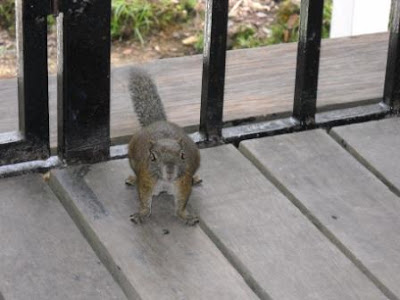
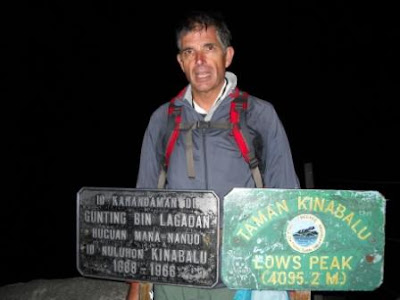











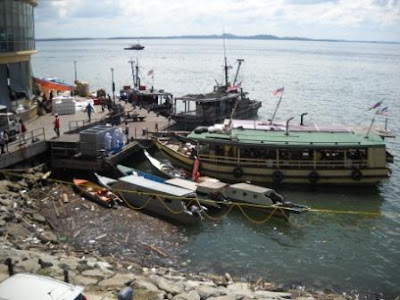











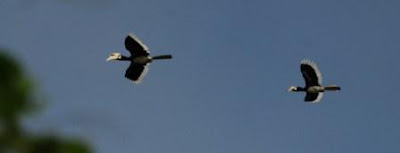
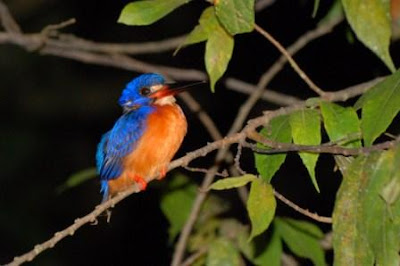









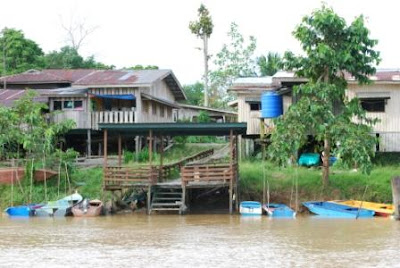
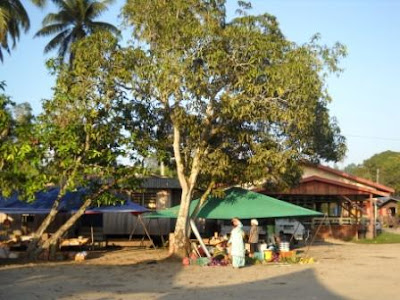













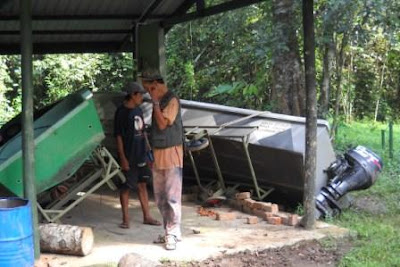









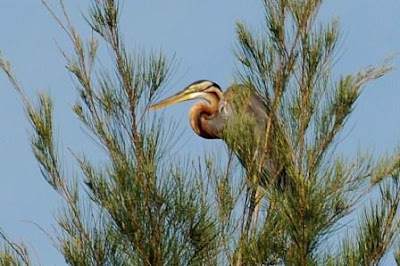
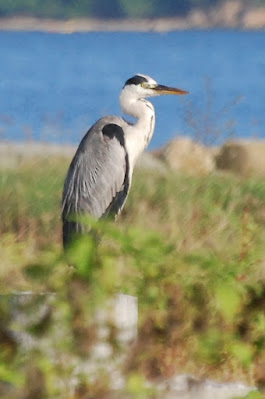


















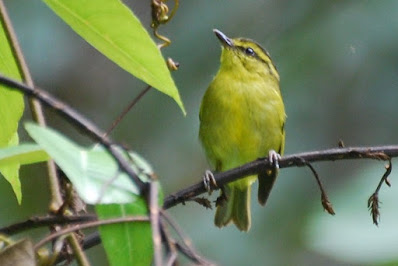

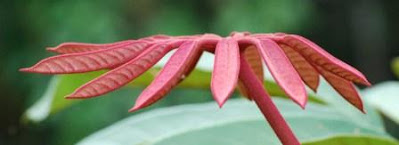






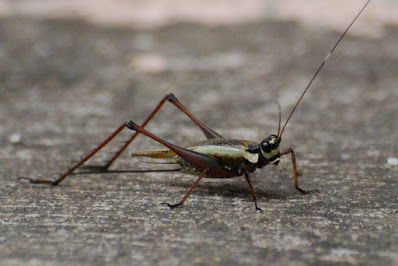
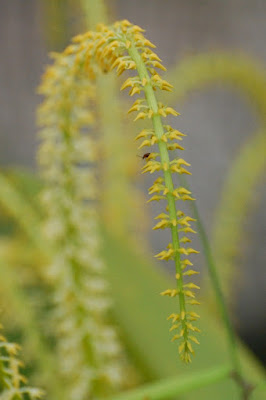
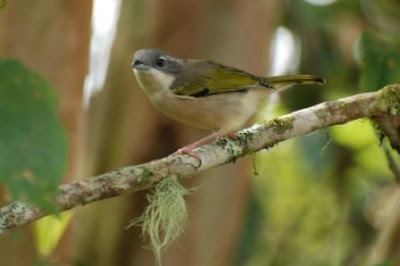


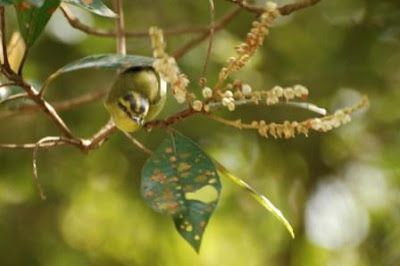













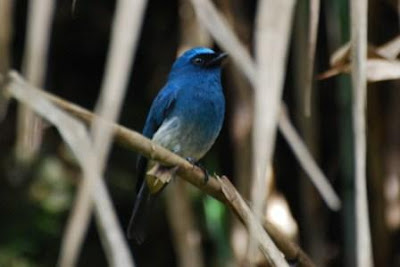


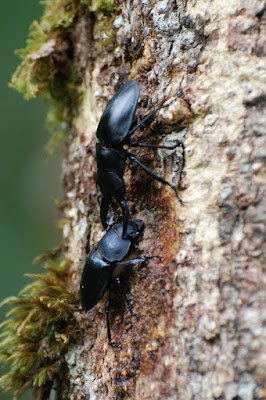






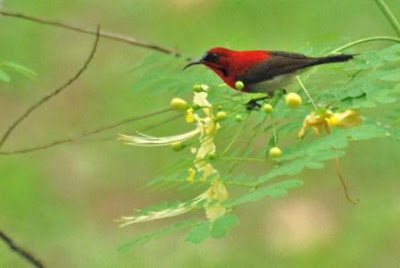







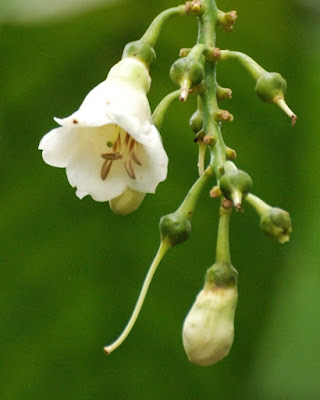











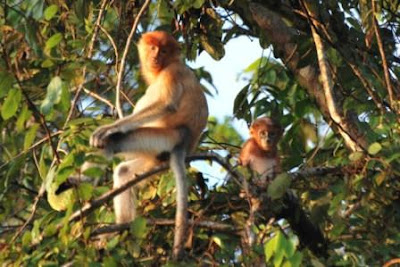

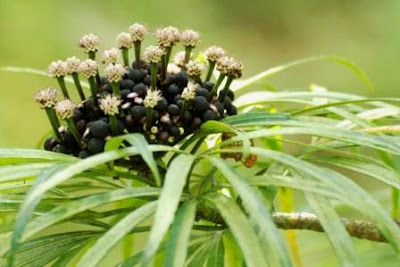








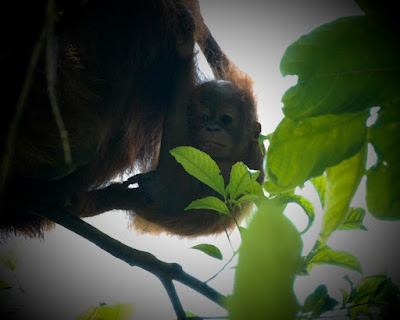



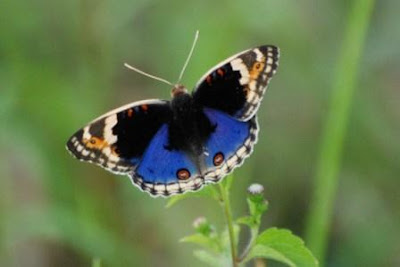










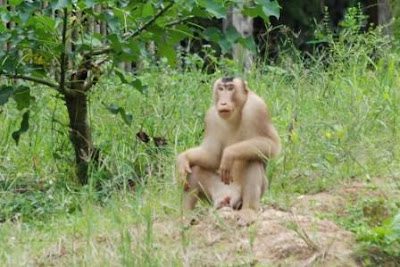

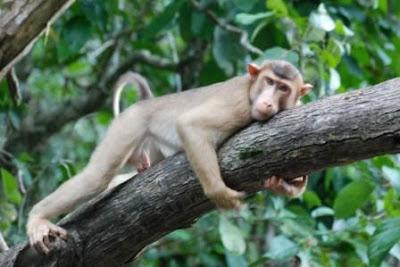


















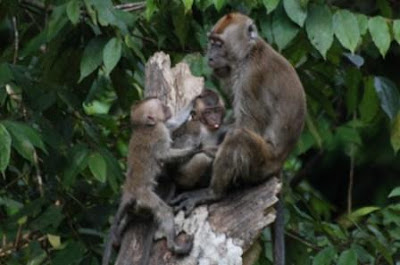










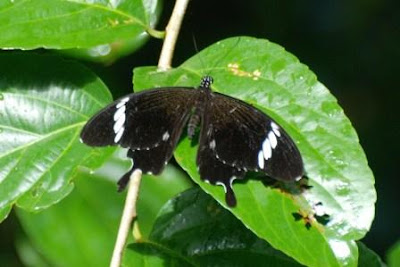
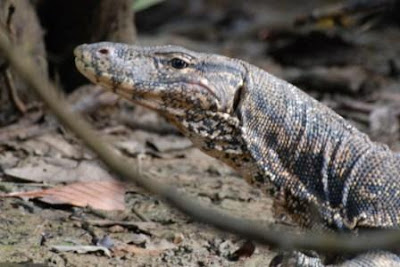



















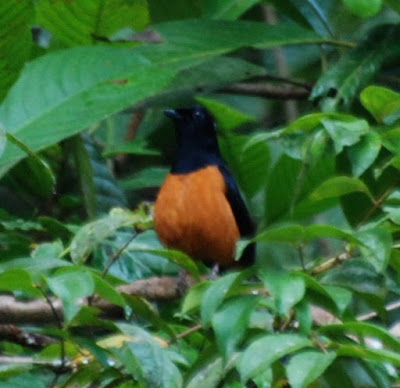


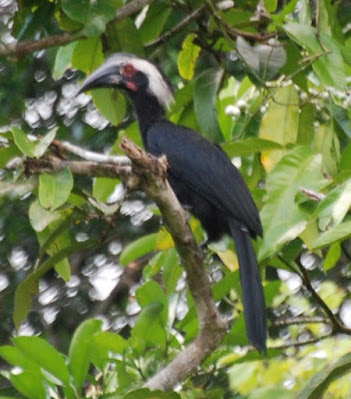

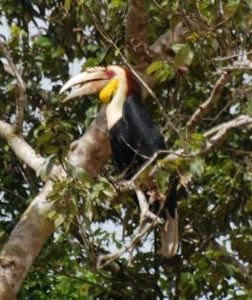

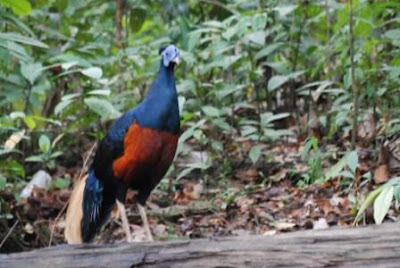


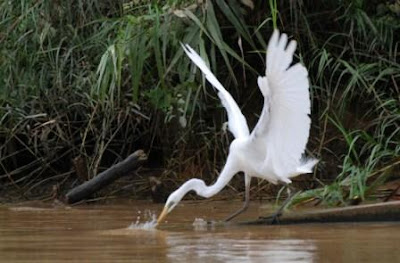
























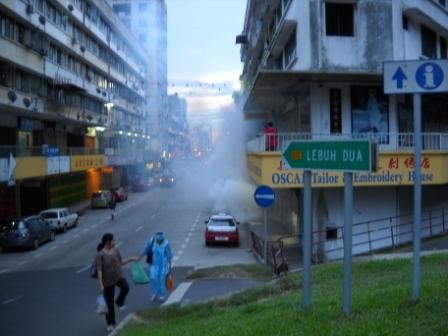





























No comments:
Post a Comment